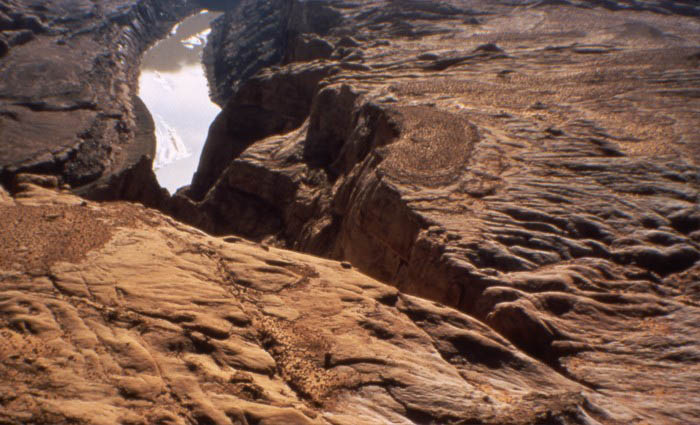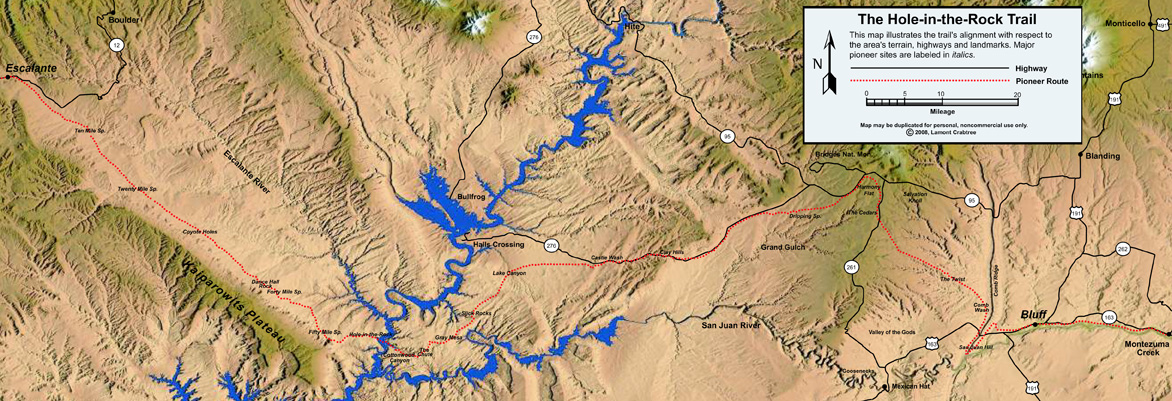Hole in the Rock Trail
 The Hole in the Rock Trail - A wagon road blazed over country so
broken up and inhospitable, the company’s scouts declared that it was
impassable!
The Hole in the Rock Trail - A wagon road blazed over country so
broken up and inhospitable, the company’s scouts declared that it was
impassable!
The Hole in the Rock Trail was named after a crevice the colonizers
utilized to gain access to the Colorado River gorge and some of the most
broken terrain in North America. Lynn Lyman photograph
The 250-mile long trail runs from Parowan in southwestern Utah to Bluff and
Montezuma Fort in southeastern Utah. The road was blazed during the winter of
1879-80 by 70 families who were answering a call from The Church of Jesus
Christ of Latter-day Saints to establish a settlement in the Four Corners
region. The first eight-five miles of their route from Parowan, Utah, to
Escalante, Utah, was over established wagon roads. From Escalante, Utah,
the last established town along their route, the colonizers blasted a trail
through the Colorado River gorge, descended crevices, and crossed deep
ravines, mountains, deserts, and forests - terrain so inhospitable many of
their own scouts deemed it as impassable.
By the time they reached their destination, they had been en route twice as
long as it took some the same participants to pull handcarts 1300 miles
to the Salt Lake Valley.
Once completed, the wagon road provided a vitial access and supply link.
The road was utilized in its entirety for one year. In 1881, Charles Hall,
who operated the ferry at the bottom of the Hole in the Rock, moved his
ferry thirty miles upstream, where he established Hall's Crossing. Although
Hall's Crossing bypassed the Hole in the Rock crevice, major sections of the
original wagon road were utilized in conjunction with the new river crossing.


 "From the oldest inhabitants I learned that the founding of Bluff was attended
with greater suffering and more arduous labor than any other like scheme of
colonization."
"From the oldest inhabitants I learned that the founding of Bluff was attended
with greater suffering and more arduous labor than any other like scheme of
colonization."  Cottonwood "Swing Tree," a favorite Bluff meeting place.
Cottonwood "Swing Tree," a favorite Bluff meeting place.